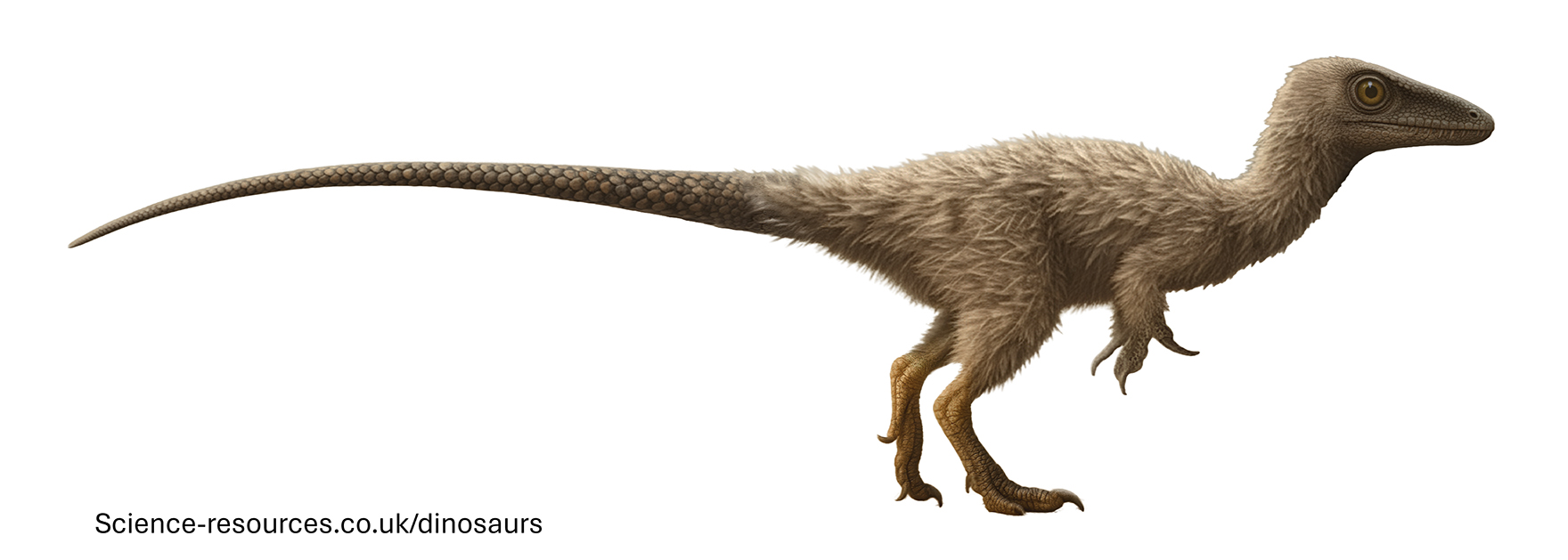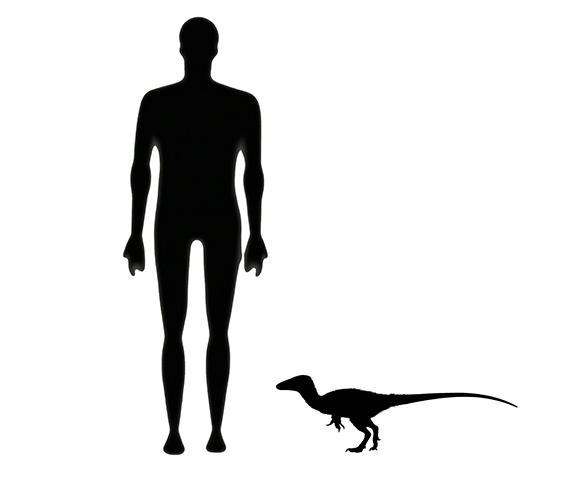Dinosaurs A:Z | J
You may also be intrested in: Free Dinosaur games
Dinosaurs: Juravenator (Jura Hunter)
You may also be intrested in: Free Dinosaur games
Last updated: 28th Oct 2025 Juravenator was a small, speedy dinosaur that lived during the Late Jurassic Period, about 150 million years ago in what is now southern Germany. Its name means “Jura Hunter” because its fossils were found in the Jura Mountains. Although not very big, Juravenator helps scientists learn a lot about feathered dinosaurs! Juravenator was a small dinosaur, growing up to about 75 centimetres (2.5 feet) long, about the size of a large chicken or a house cat. It likely weighed only a few kilograms, making it light and quick on its feet. Its small size meant it could move swiftly through the forests and underbrush where it lived. With its long legs and light build, Juravenator was built for speed. It could probably sprint quickly to chase down insects and small animals or escape from larger predators. Juravenator had a slim body, a long tail for balance, and strong hind legs for running. Its head was narrow with sharp, conical teeth. Fossil evidence suggests it had scaly skin along much of its body, but it may also have had simple, hair-like filaments, especially when young. Its arms were short but strong, ending in clawed hands it might have used to grab food. Generative AI Notification: Some elements of this image have been created or enhanced using AI technology. To find out how we create all our dinosaurs, click here.What is Juravenator?
How big was Juravenator?
Was Juravenator a fast runner?
Appearance
 Juravenator
Juravenator
Pronounced: joo-rah-ven-AY-tor Name Means: “Jura Hunter” Length: up to 0.75 m (2.5 feet) Height: about 0.3 m (1 foot) at the hip Weight: about 1–2 kilograms (as much as a chicken or rabbit) Diet: Carnivore (meat-eater) Time: Late Jurassic (about 150 million years ago) Fossils Found: Europe (Germany) Juravenator was a carnivore, which means it ate meat. With its sharp teeth and agile body, it probably hunted insects, small reptiles, and perhaps even young mammals or small dinosaurs. Its pointed teeth were perfect for catching and eating its prey. Juravenator is famous because its fossil is so well-preserved that scientists can see details of its skin. Most of its body was covered in scales, but there may have been simple filaments (similar to very basic feathers) on some parts, especially when it was young. This tells us that feather-like coverings were starting to appear in some dinosaurs, but not all of them were fluffy! Partially-feathered (Down-like fur covering) Juravenator Juravenator lived in what is now southern Germany, which was a warm, tropical area filled with islands, lagoons, and forests during the Jurassic Period. It probably hunted for food along the shores and among the plants, staying alert for bigger predators.


Juravenator Facts
What did Juravenator eat?
Did Juravenator have feathers?

Where did Juravenator live?
Juravenator was part of the Compsognathidae family, a group of small, fast, meat-eating dinosaurs. Its relatives include Compsognathus and Sinosauropteryx. These dinosaurs are known for their light bodies and bird-like features.
Juravenator had a long, flexible neck, a slender head with sharp teeth, and a long tail for balance. Its birdlike legs helped it run quickly.
Juravenator had a fairly large brain for its size, which helped it to be alert and quick. Like other small theropods, it needed to be clever to hunt for food and avoid danger.
• Meaning: Juravenator means "pretty jaw" in Greek.
• Size: Juravenator was about 0.7 meters (2-3 feet) long and weighed around 3 kg (8 pounds).
• Diet: It was a carnivore, mainly eating small vertebrates.
• Fossil: The first fossil evidence of Juravenator was discovered in Bavaria in southern Germany in the late 1850s.
During the Late Jurassic Period, which spanned approximately 163 to 145 million years ago, Juravenator emerged as one of the most remarkable small theropod dinosaurs of its time. This period was marked by a rich diversity of life, as ecosystems were dominated by giant sauropods and other iconic dinosaurs. Some notable animals from the Late Jurassic include:
Q1: What is a Juravenator?
A1: Juravenator was a small, carnivorous dinosaur that lived during the Late Jurassic Period, around 150 million years ago. Its name means "Jura Hunter".
Q2: What does Juravenator mean?
A2: Juravenator means “Jura Hunter”, named after the Jura Mountains where it was found.
Q3: Was Juravenator a carnivore?
A3: Yes, Juravenator ate meat, probably insects, small reptiles, and other tiny animals.
Q4: Did Juravenator have feathers?
A4: Juravenator was mostly covered in scales, but some evidence of simple, hair-like filaments, especially when young, have been found.
Q5: Where did Juravenator live?
A5: Juravenator lived in what is now southern Germany, in a tropical island environment during the Jurassic.
Q6: Was Juravenator fast?
A6: Yes, Juravenator was a speedy runner!
Q7: How big was Juravenator?
A7: Juravenator was approximately 0.75 metres (2.5 feet) long, about the size of a chicken or cat.
Q8: Who were Juravenators’ closest relatives?
A8: Juravenator was related to other small, fast hunters like Compsognathus and Sinosauropteryx.
Which family of Dinosaurs did Juravenator belong to?
Did Juravenator have any unique features?
Was Juravenator intelligent?
Interesting Facts
What other Dinosaurs / Prehistoric animals lived at the same time as Juravenator?
Juravenator FAQ
You may also be intrested in: